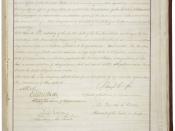'Equality of rights under the law shall not be denied or abridged by the United States or by any state on account of sex.'
In 1923, this statement was admitted to Congress under the Equal Rights Amendment (ERA). The ERA was a proposed amendment to the United States Constitution granting equality between men and women under the law. If the Era was passed, it would have made unconstitutional any laws that grant one sex different rights than the other. However, in the 1970s, the Era was not passed, and therefore did not become law.
The idea for an equal rights amendment first became acknowledged in the early part of the twentieth century. In 1916, Alice Paul founded the National Women's party (NWP), a political party dedicated to establishing equal rights for women. Traditionally, women were viewed as weaker and inferior to men. The purpose of the ERA was to prohibit any person from acting on this belief.
Alice Paul viewed that equality under the law was the foundation essential to full equality for women.
In November of 1922, the NWP voted to work for a federal amendment that could guarantee women's equal rights regardless of legislatures' indecisions. The NWP had 400 women lobbying for equality.
Despite strong opposition by some women and men, the NWP introduced and Equal Rights Amendment to the United States Constitution in 1923. In order to become law, the amendment needed a two-thirds vote in both houses of the congress of the United States, or a supporting petition of two-thirds of the state legislatures. Then the amendment would have required ratification by three-fourths of the states. However, it failed to get the two-thirds majority required to move onto the states for approval. The proposed amendment also failed in following sessions until 1972, when it won a...


